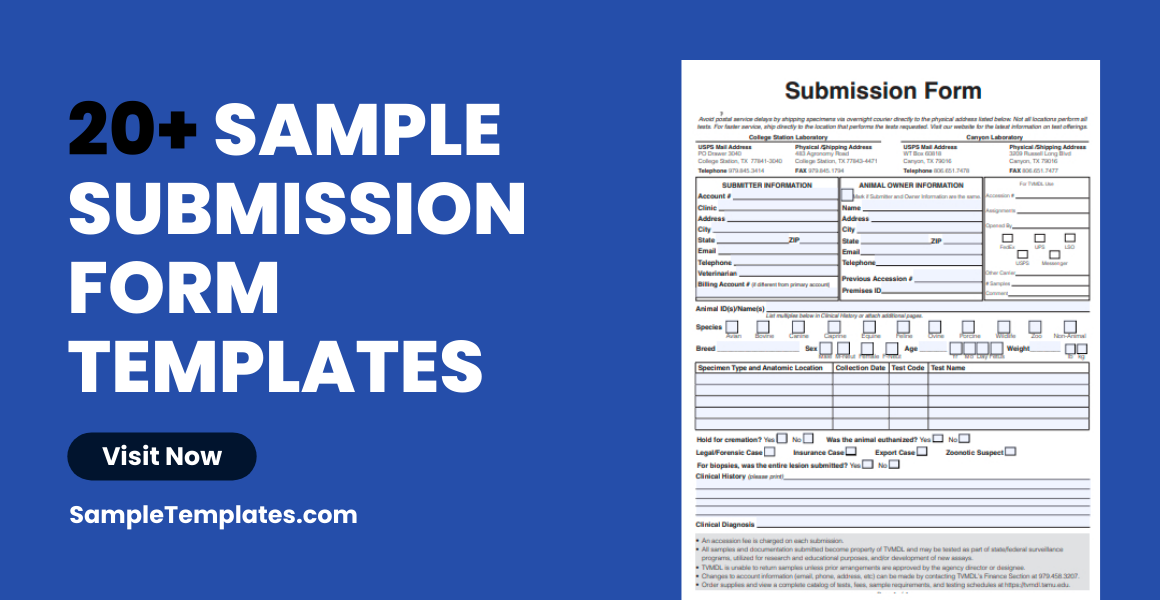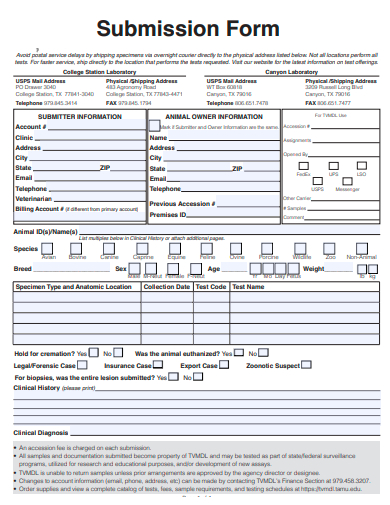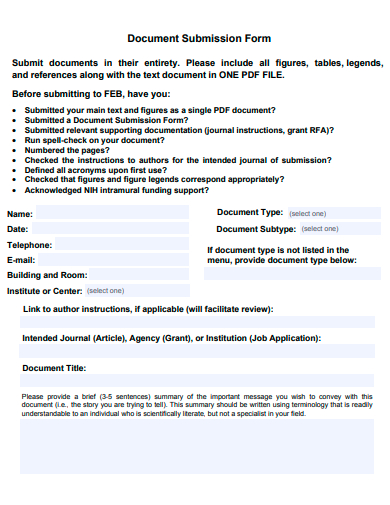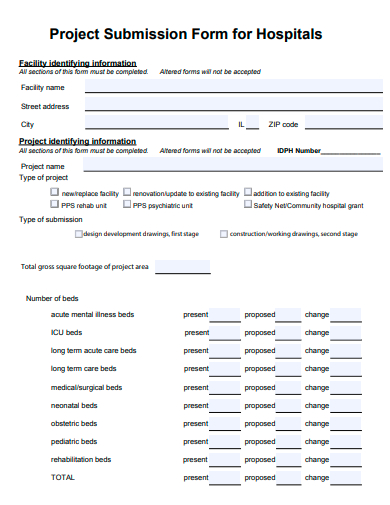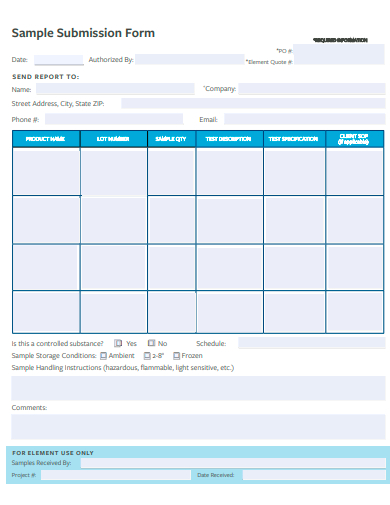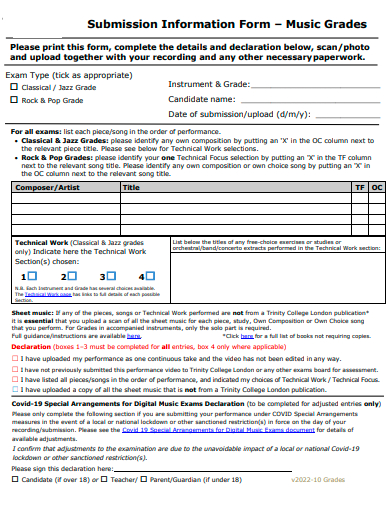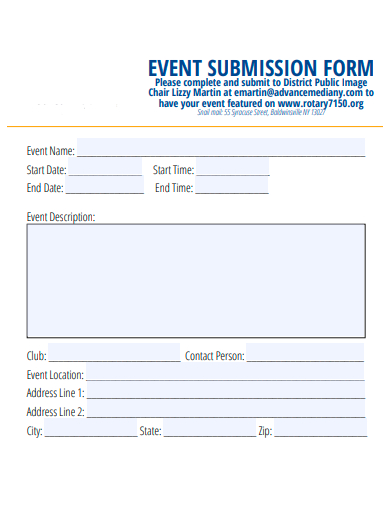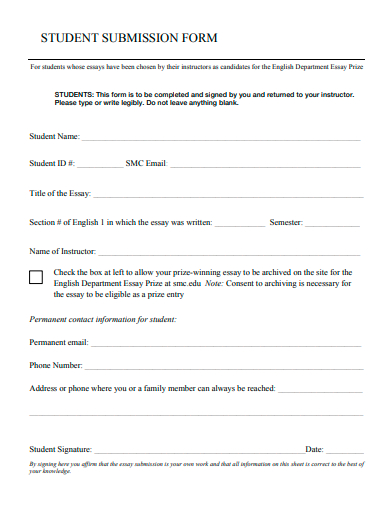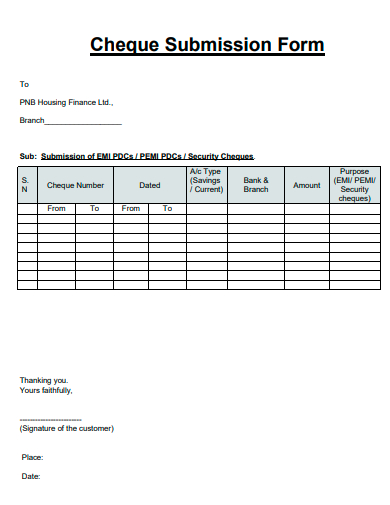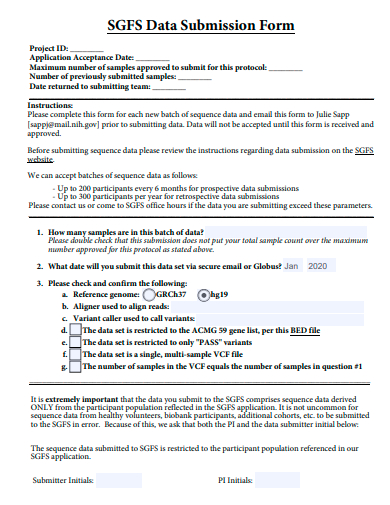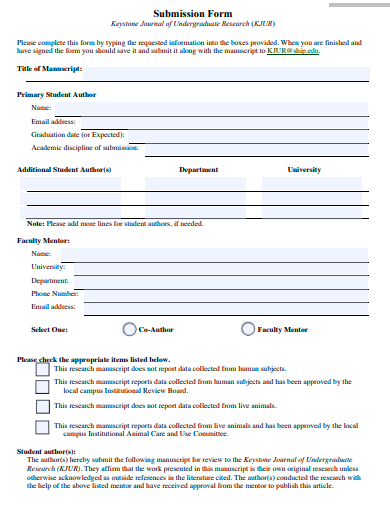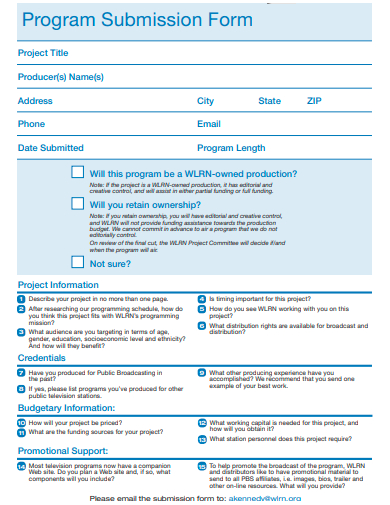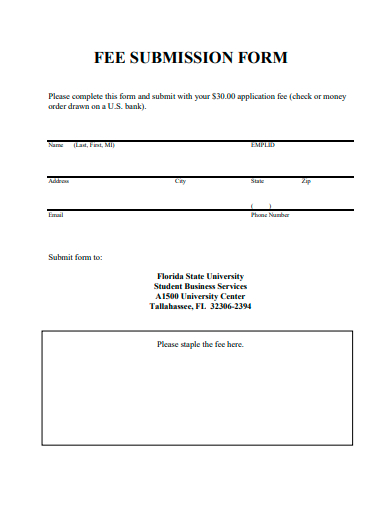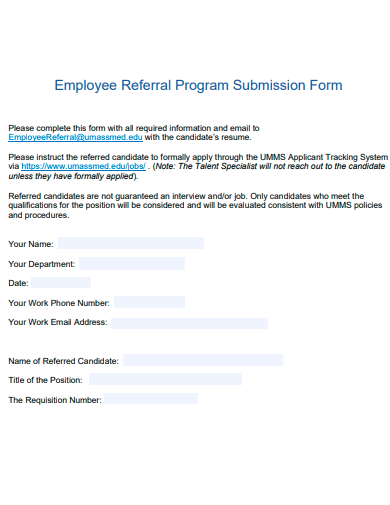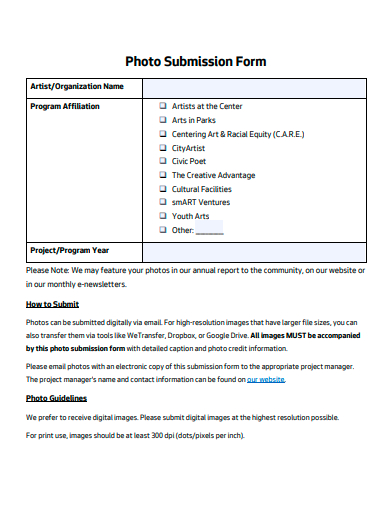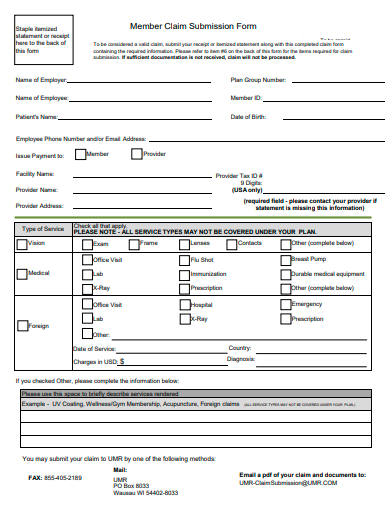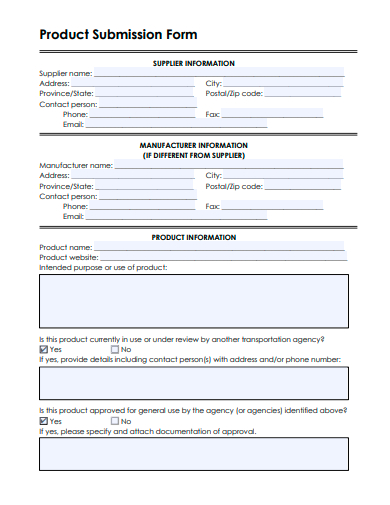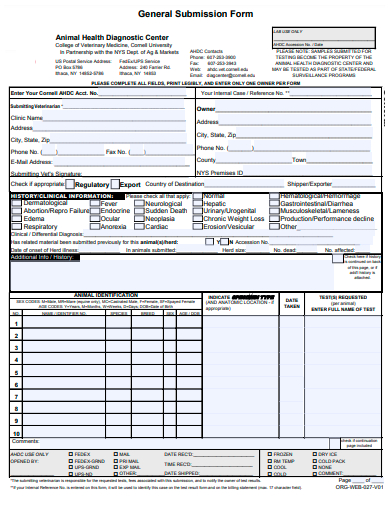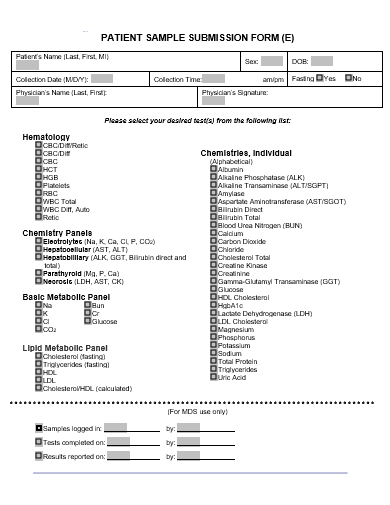Dive into our Sample Submission Form Template, meticulously crafted for those aiming for efficient data collection. Whether you’re a business, a team, or an individual, form template simplifies and modernizes your submission process. Its intuitive design and user-centric layout ensure that gathering crucial details is smooth and effortless. Experience a new standard in data collection with our innovative submission template!
20+ Submission Form Samples
1. Submission Form Template
2. Sample Document Submission Form Template
3. Project Submission Form for Hospitals Template
4. Sample Submission Form Template
What is a Submission Form?
A submission form, at its core, is a tool used to collect specific information from an individual or group. These forms have been a staple in both the digital and non-digital worlds for many years, serving a myriad of purposes. From paper applications and surveys handed out in public spaces to online registration forms and feedback portals, submission forms bridge the gap between the collector (often a business or organization) and the submitter (usually a client, customer, or general public).
Key Components of a Submission Form:
Field Inputs: These are the areas where the users input their information. Common fields include text boxes for names, dropdown menus for selecting options, radio buttons for multiple-choice questions, and checkboxes for multiple selections.
Instructions: Often accompanying field inputs, instructions guide the user on how to complete the form, ensuring the data collected is accurate and relevant.
Submit Button: This is the final action a user takes to send their information. On digital forms, it’s often a clickable button that, once pressed, transmits the user’s data to a server or database.
Validation: Especially important in digital forms, validation mechanisms ensure that the information provided meets specific criteria, like a valid email format or matching password entries.
Types and Uses:
Submission forms come in many shapes and sizes, tailored to their specific purpose. Here are a few common examples:
Registration Forms: Used for signing up for events, services, or memberships.
Feedback and Survey Forms: Allow customers or users to provide their opinions, suggestions, or report issues.
Order Forms: Used in businesses to facilitate the purchasing process, often detailing product type, quantity, and payment information.
Contact Forms: Commonly found on websites, they provide a structured way for visitors to leave a message or inquiry.
Application Forms: Whether for job positions, educational institutions, or various programs, these forms gather comprehensive data from applicants.
Benefits of Submission Forms:
Standardization: By having a set structure, submission forms ensure that the information collected is consistent across all users.
Efficiency: Digital forms, in particular, can be filled out and processed faster than paper alternatives. They can be easily shared, stored, and analyzed without physical constraints.
Accuracy: Guided fields and validation checks reduce the chance of errors, ensuring high-quality data collection.
Accessibility: Online forms are accessible to a wider audience, allowing submissions from anywhere in the world, 24/7.
In an increasingly digital age, the significance of submission forms has grown. They are a primary method of interaction between users and organizations on the web, creating avenues for communication, transaction, feedback, and more. Understanding the essence of a submission form and its potential applications can enhance any data-driven activity, making processes smoother and more effective. Whether on paper or online, the humble submission form remains a cornerstone of organized information collection.
5. Submission Information Form Template
6. Sample Event Submission Form Template
7. Student Submission Form Template
8. Sample Cheque Submission Form Template
Why Use a Submission Form?
Submission forms, whether digital or paper-based, have stood the test of time as essential tools in a variety of contexts. They are the bridges that connect businesses, organizations, and service providers to their audiences. But why have they become so integral to our daily processes? Here’s a deeper look into the advantages of using submission forms.
Streamlined Data Collection:
Submission forms present a structured and consistent platform to gather information. This standardization ensures that every respondent provides the exact set of data required, eliminating the chances of missing out on vital details. Whether you’re registering attendees for an event, gathering feedback, or processing orders, submission forms guarantee that all necessary data points are covered.
Improved Efficiency and Productivity:
Time is a precious resource. Submission forms expedite the data collection process by providing clear, concise fields for input. Especially in the digital realm, automatic data population, drop-down selections, and checkboxes can make the form-filling experience faster and more intuitive.
Enhanced Accuracy and Quality:
By guiding users step-by-step and employing validation measures, submission forms reduce the likelihood of errors. This ensures that the information collected is not only consistent but also accurate. Automated forms can further minimize human error by employing mechanisms like mandatory fields, format validations (e.g., for date or email), and more.
Increased Engagement:
For businesses and websites, offering interactive submission forms can enhance user engagement. These forms can be customized to be visually appealing and user-friendly, making the process of interaction enjoyable for the audience. The ease of use can increase the likelihood of users completing the form, ensuring a higher response rate.
Cost-effective Solution:
Digital submission forms, in particular, have the advantage of being more cost-effective than traditional paper-based methods. They eliminate costs associated with printing, distribution, and storage. Furthermore, digital forms are environmentally friendly, contributing to reduced paper waste.
Data Analysis and Integration:
One of the prominent advantages of digital submission forms is the ease with which data can be integrated into other systems. This allows for automatic data analysis, generating insights, trends, and patterns. Integration with Customer Relationship Management (CRM) systems, for example, can lead to more personalized customer interactions and improved service delivery.
Accessibility and Global Reach:
Online submission forms can be accessed from anywhere and at any time. This 24/7 availability ensures a global reach, especially vital for businesses and services aiming for an international audience. Such accessibility increases the chances of getting a diverse set of responses, providing a broader perspective.
In an era where data is gold, submission forms act as the miners, extracting valuable information efficiently and systematically. Their adaptability, cost-effectiveness, and user-centric design make them indispensable tools in today’s interconnected world. Whether you’re a small business, a multinational corporation, or an individual creator, utilizing submission forms can significantly enhance your data collection and interaction strategies.
9. Data Submission Form Template
10. Basic Submission Form Template
12. Equipment Submission Form Template
13. Sample Program Submission Form Template
14. Fee Submission Form Template
15. Employee Referral Program Submission Form Template
16. Sample Photo Submission Form Template
17. Member Claim Submission Form Template
18. Product Submission Form Template
19. Medical Documentation Submission Form Template
20. General Submission Form Template
21. Patient Submission Form Template
Different Types of Submission Forms
Submission forms, with their diverse designs and functions, are omnipresent across various sectors, including businesses, educational institutions, creative fields, and public services. Acting as structured platforms for collecting, documenting, and processing information, they streamline communication between entities and individuals. Here’s a comprehensive look at the myriad types of submission forms:
Registration Forms:
Used primarily to register attendees for events, webinars, workshops, or courses. Essential details usually encompass name, contact information, and any special requirements or preferences of the attendee.
Feedback and Survey Forms:
These tools allow businesses and organizations to gauge customer or employee satisfaction, collect opinions on offerings, or amass data for market research. Formats often include multiple-choice questions, rating scales, and open-ended queries.
Order and Purchase Forms:
Crucial in commerce, these capture specifics related to product choice, quantity, billing and shipping particulars, and payment info. They enable businesses to monitor and fulfill customer orders seamlessly.
Application Forms:
These wide-ranging forms cater to job recruitments, college admissions, grant proposals, and more. Designed to evaluate the applicant’s eligibility and qualifications, they collect extensive data, from personal particulars to academic and professional backgrounds.
Contact Forms:
A mainstay on numerous websites, these facilitate visitors in transmitting messages, inquiries, or feedback. Common fields are the user’s name, email, subject, and the message’s main content.
Booking and Reservation Forms:
Deployed by entities like hotels, eateries, airlines, and other service-oriented establishments, these forms aid customers in reserving services for chosen dates and times, ensuring prompt availability and efficient resource management.
Consent and Agreement Forms:
Imperative in scenarios necessitating permissions or confirmations. Examples range from medical consent forms, where a patient accedes to specific treatment, to user agreement forms on digital platforms.
Claim and Report Forms:
Predominantly found in sectors like insurance, HR, or customer service, these forms enable individuals to chronicle incidents or defects and subsequently claim compensations or remedies.
Subscription Forms:
Ubiquitous on content-rich platforms like blogs or news websites, these forms facilitate users in subscribing to regular content dispatches like newsletters or notifications.
Donation and Pledge Forms:
Leveraged by philanthropic bodies, they simplify the donation process. They document details of the benefactor and the nature or amount of the contribution being extended.
In essence, submission forms, given their varied applications, stand as indispensable tools in today’s interconnected world. Whether you’re an artist seeking feedback, a business refining customer interactions, or a non-profit mobilizing support, there’s a submission form tailored to your requirements. Recognizing the various types on offer can aid in picking or crafting the most suitable form for any objective.
Related Posts
Sample Sworn Affidavit Forms
Vehicle Inspection Forms Samples & Templates
Sample Employee Advance Forms
Sample Child Travel Consent Forms
Sample Testimonial Request Forms
Sample Employee Details Forms
Sample Divorce Forms
Sample Attestation Forms
Employee Performance Appraisal Form Templates
FREE 9+ Sample Presentation Evaluation Forms in MS Word
FREE 10+ School Admission Form Samples & Templates in MS Word | PDF
FREE 30+ Patient Consent Form Samples in PDF | MS Word
FREE 10+ Sample Sign Off Form Templates in PDF | MS Word
FREE 11+ Sample Medical Consultation Forms in PDF | MS Word
FREE 8+ Sample Donation Forms in PDF | MS Word
